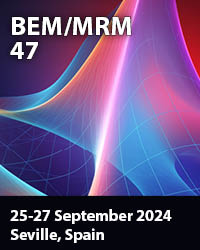SPATIAL CORRELATION OF THE BACKSCATTERED ULTRASONIC GRAIN NOISE IN THE ULTRASONIC INSPECTION OF THE FORGING TITANIUM ALLOY
Price
Free (open access)
Transaction
Volume
130
Pages
12
Page Range
133 - 144
Published
2021
Paper DOI
10.2495/CMEM210121
Copyright
Author(s)
THEODOR TRANCĂ, IULIANA RADU
Abstract
Ultrasonic inspection is a routine Non Destructive Examination (NDE) method adopted by the aircraft engine manufacturers. However, the detection of smaller defects in such materials is made difficult by the complicated ultrasound-microstructure interactions. One of the adverse influences of the interactions is the high backscattered grain noise level accompanying the ultrasonic inspections of some titanium alloys. The high grain noise deteriorates the Signal to Noise ratio (S/N) of pulse/echo inspections and consequently may lead to the missing detection of an existing flaw. Ultrasonic signal fluctuations have direct impact on flaw detection, flaw characterization and the estimation of the Probability of Detection (POD). The total backscattering is controlled by grain morphology, grain orientation and elastic anisotropy, which may vary throughout the microstructure. Thus any ThermoMechanical Processing (TMP) leading to the variations of material microstructure may influence the backscattered grain noise. We developed new ideas of how to extract useful microstructural information from the forging simulation software Simufact.forming, a commercial software package produced by Simufact Engineering GmbH. A model is then developed to correlate the grain noise signals with the microstructural variations due to the inhomogeneous plastic deformation associated with the forging processing. The grain noise levels predicted by the model at various locations are compared with experiments. Reasonably good agreements are observed.
Keywords
ultrasonic grain noise, simulation software, elastic anisotropy





